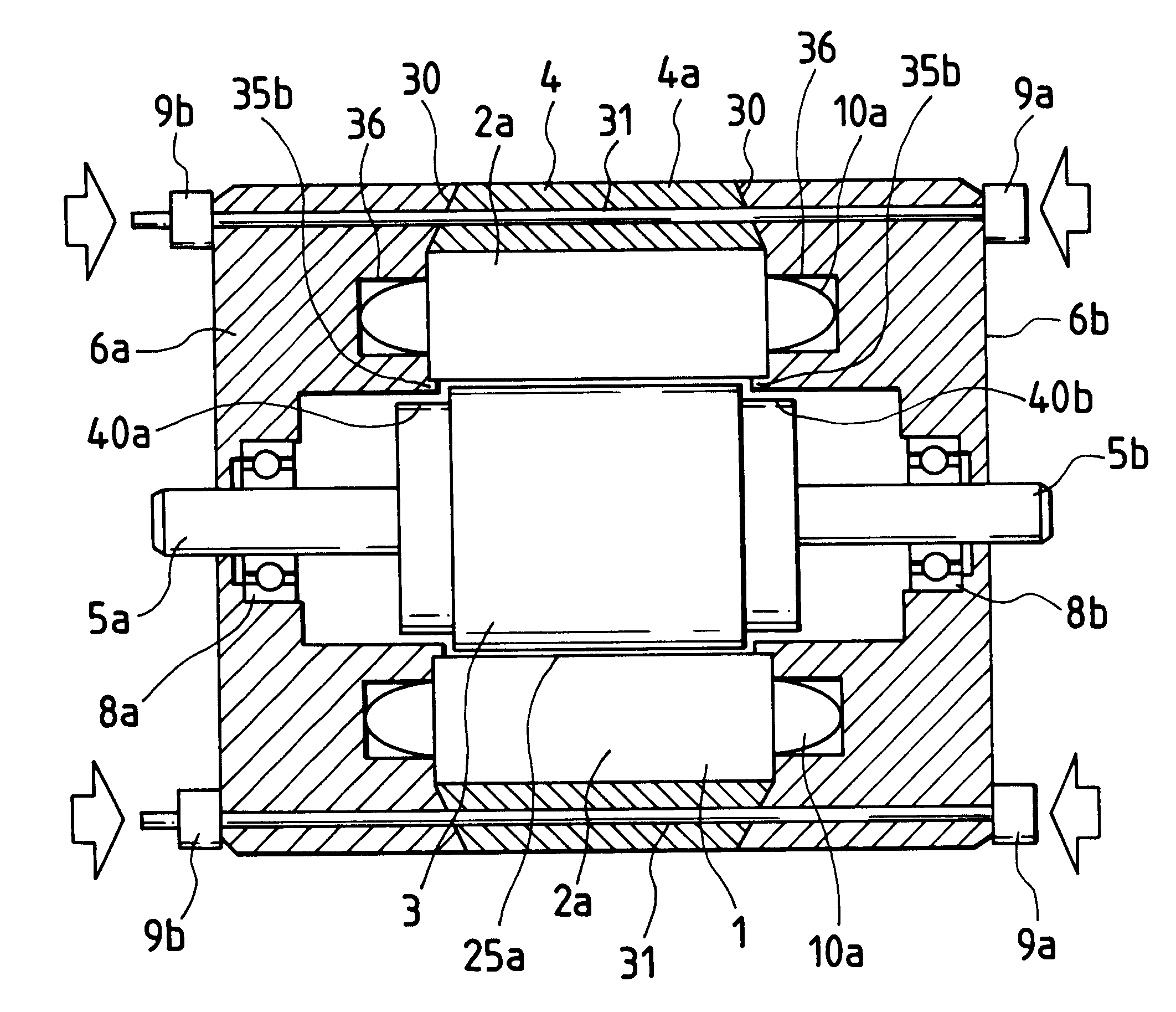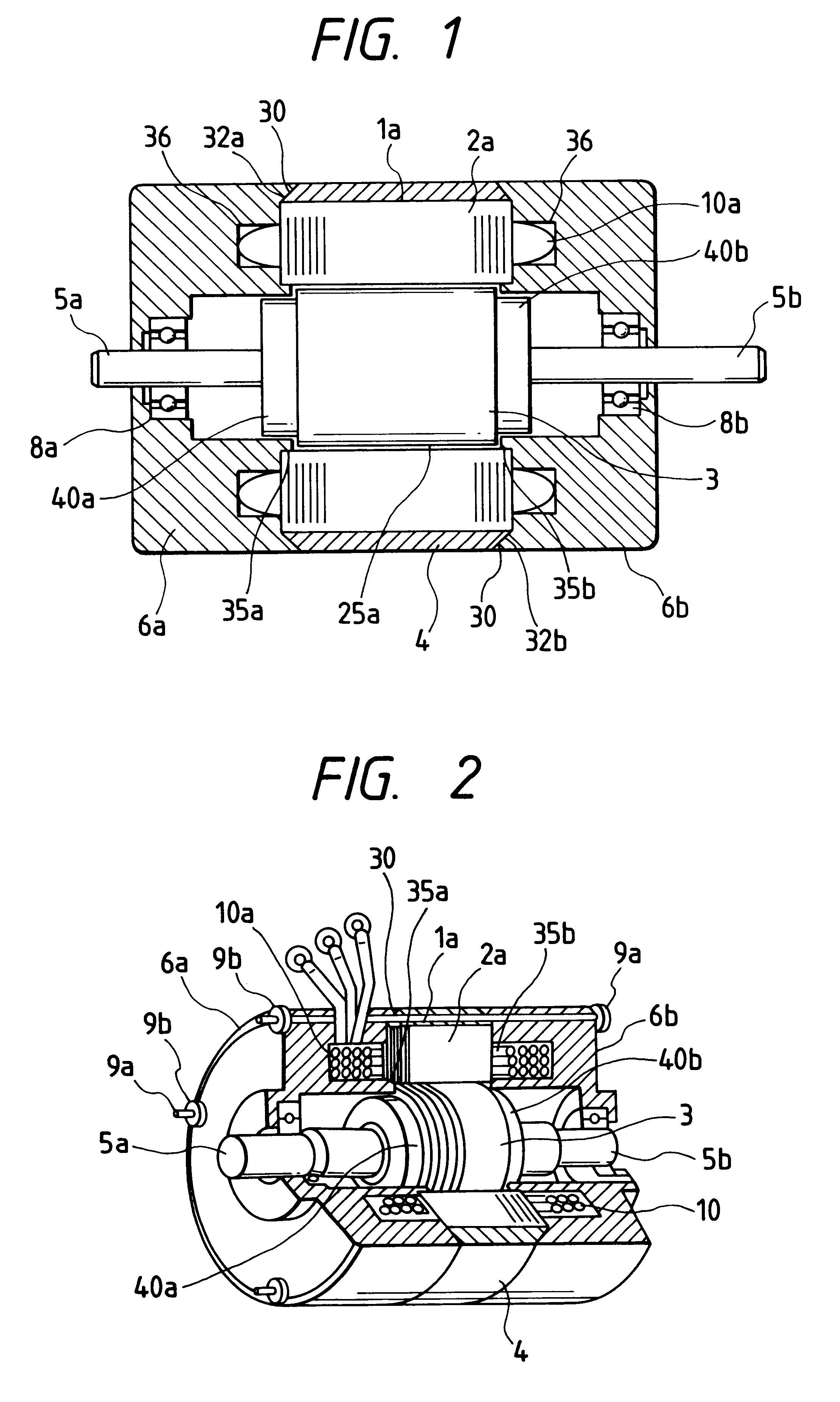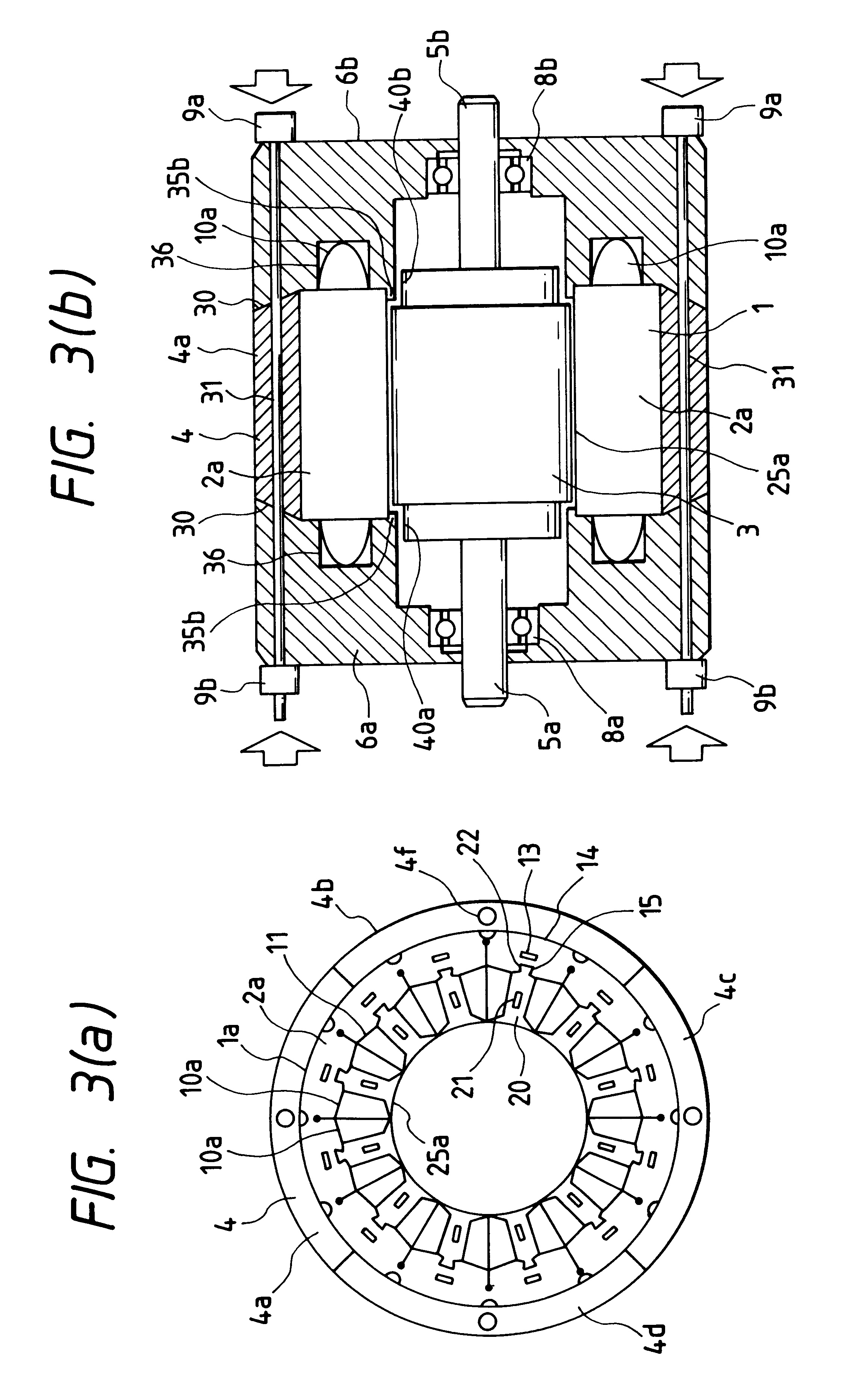Electric rotating machine
a rotating machine and electric technology, applied in the direction of windings, cooling/ventilation arrangement, magnetic circuit shape/form/construction, etc., can solve the problems of limiting the height of the coil end, and the inability to wind the coil in alignmen
- Summary
- Abstract
- Description
- Claims
- Application Information
AI Technical Summary
Problems solved by technology
Method used
Image
Examples
Embodiment Construction
)
Hereinafter, electric rotating machines according to embodiments of the present invention will be fully explained by referring to the attached drawings.
In FIG. 1, there is shown the basic construction of an electric rotating machine according to one embodiment of the present invention. Namely, the electric rotating machine, such as an induction motor, a synchronous motor, etc., according to the present invention, is constructed with a stator 1a and a rotor 3, wherein the stator 1a comprises a core 2a, being formed by compiling or laminating silicon steel plates, for example, and coils 10a which are inserted into slots 11 (shown in FIG. 3(a)) of the said core 2a with high space factor, thereby positioning or inserting the coils 10a into the slots with high space factor, which are provided in a large number thereof in the stator core 2a, as shown in the FIG. 3(a) . Also, the rotor 3 has such the structure that axes 5a and 5b are combined or connected to a portion forming the body of ...
PUM
 Login to View More
Login to View More Abstract
Description
Claims
Application Information
 Login to View More
Login to View More - R&D
- Intellectual Property
- Life Sciences
- Materials
- Tech Scout
- Unparalleled Data Quality
- Higher Quality Content
- 60% Fewer Hallucinations
Browse by: Latest US Patents, China's latest patents, Technical Efficacy Thesaurus, Application Domain, Technology Topic, Popular Technical Reports.
© 2025 PatSnap. All rights reserved.Legal|Privacy policy|Modern Slavery Act Transparency Statement|Sitemap|About US| Contact US: help@patsnap.com



